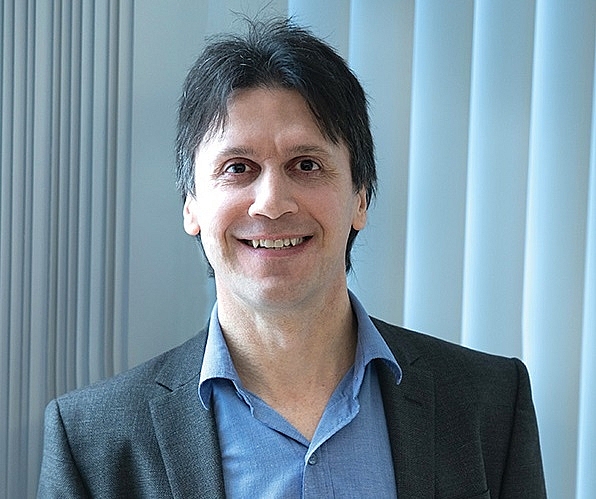Transforming Vietnam into a smart tech hub
 |
| Denis Brunetti, president of Ericsson in Vietnam, Myanmar, Cambodia, and Laos |
It has been said that the deeper we look into the past, the further we can see in the future. Reflecting on Vietnam’s phenomenal socioeconomic development journey over the past 30 years, it is clear that the government’s vision and strategic focus on promoting the nationwide deployment of early generation mobile communication networks since the early 1990’s played a pivotal role in accelerating Vietnam’s GDP growth rate, which has averaged around 6 per cent during that period.
Moving forward, the government has wisely embraced science, technology, and innovation as the key enabler for future inclusive and sustained growth, highlighting digital transformation in the form of Industry 4.0 and the digital economy as the foundation for attracting high-tech overseas investment and stimulating startup entrepreneurship across the nation, enabled by 5G as the critical national infrastructure – the spinal cord of an intelligent digital infrastructure.
As well as helping make industries and enterprises increasingly more productive and efficient, digital transformation helps create new revenue streams, unlocking the full potential and value of companies across Vietnam. Given the vast opportunities that are now available to Vietnamese firms across all economic sectors due various free trade agreements, it has become even more important than ever for companies to capture those opportunities through the increased competitiveness realised through digital transformation.
Through M&A activities, companies are able to create value through the establishment of complementary capabilities. In this context, digital transformation helps further improve the seamless integration of merged or acquired companies, as well as helping derive additional efficiencies and productivity gains. For this reason, it is becoming increasingly important that all companies perceive themselves as technology companies, embracing and adopting science, technology and innovation as key pillars and enablers in everything they do. And it is imperative that digital transformation be driven top down and across the whole organisation seamlessly, consistently and in a fully integrated manner.
Irrespective of how long a company has been in existence, it is wise to view the organisation as a startup endeavour, consistently looking for ways to reinvent, innovate, and organically or inorganically grow and develop complementary capabilities that are needed to reimagine the future and capture new and emerging business opportunities. In our long and proud 144-year history, Ericsson has managed to do just that – innovate and reinvent ourselves for future sustained success.
Ericsson’s Enterprise Strategy is a company-wide strategy leveraging offerings across the organisation to drive and create growth through mobile operators into the enterprise sphere. As a recent example, Ericsson has completed the acquisition of Cradlepoint, the world leader in wireless edge solutions and the emerging wireless WAN market. The acquisition underpins Ericsson’s stated vision to accelerate organic and inorganic growth in the 5G market and, in particular, establish a leadership position in the global 5G enterprise business by investing in value-creating standalone businesses, just like Cradlepoint.
This supports Ericsson’s critical primary customer base – mobile operators – to grow enterprise revenues and monetise their 4G and 5G mobile network investments. Through Cradlepoint’s solutions, enterprises can connect sites, vehicles, mobile workforces, and Internet of Things (IoT) devices in a simple and secure way using mobile broadband technology such as 4G and 5G.
In the next wave of digital transformations, businesses and critical infrastructure providers require advanced connectivity services, coupled with growth in IoT devices and cloud based applications to deliver faster and secure mobile services whenever and wherever needed. Through the timely acquisition of Cradlepoint, Ericsson is now focusing on helping mobile operators deliver innovative over-the-top services to the enterprise market that unlocks the full transformational value of 5G, making them more productive, efficient and competitive. This M&A investment is pivotal to Ericsson’s strategy of capturing market share in the rapidly expanding 5G enterprise market.
With over two-thirds of the world’s manufacturing facilities expected to be located in Asia by 2025, Vietnam is well positioned to become the preferred high-tech investment destination in ASEAN, transforming Vietnam into a smart manufacturing hub for the region.
Ericsson is committed to partnering with our mobile operator customers in Vietnam to help them drive digital transformation engagements with enterprises large and small across Vietnam, including state-owned groups, while leveraging existing 4G and future 5G critical national digital infrastructure as the enabling platform for IoT connectivity and innovation. Indeed, Ericsson’s promise is to continue its long-term strategic partnership with Vietnam, aligning our ICT activities with the national interest and visionary digital transformation agenda of the Vietnamese government.
What the stars mean:
★ Poor ★ ★ Promising ★★★ Good ★★★★ Very good ★★★★★ Exceptional
Themes: Digital Transformation
Related Contents
Latest News
More News
- UOA recognised for standout M&A deal in Ho Chi Minh City (December 12, 2025 | 11:32)
- Japanese investors pursue M&A strategies with long-term vision in Vietnam (December 11, 2025 | 12:14)
- FiinRatings wins M&A award as S&P deal strengthens Vietnam’s credit market (December 10, 2025 | 18:52)
- Unpacking new momentum in Vietnam’s M&A market (December 10, 2025 | 09:59)
- Landscape strong for domestic acquisitions (December 09, 2025 | 15:34)
- Vietnam’s M&A market opens new opportunities amid strong economic momentum (December 09, 2025 | 15:00)
- Expansions in healthcare more likely (December 08, 2025 | 11:16)
- Fundamentals required for M&A wins (December 08, 2025 | 11:08)
- Outlook in M&A solid for Singapore (December 08, 2025 | 10:31)
- Fresh M&A cycle ahead as reforms begin to take effect (December 08, 2025 | 08:00)

 Tag:
Tag:




















 Mobile Version
Mobile Version